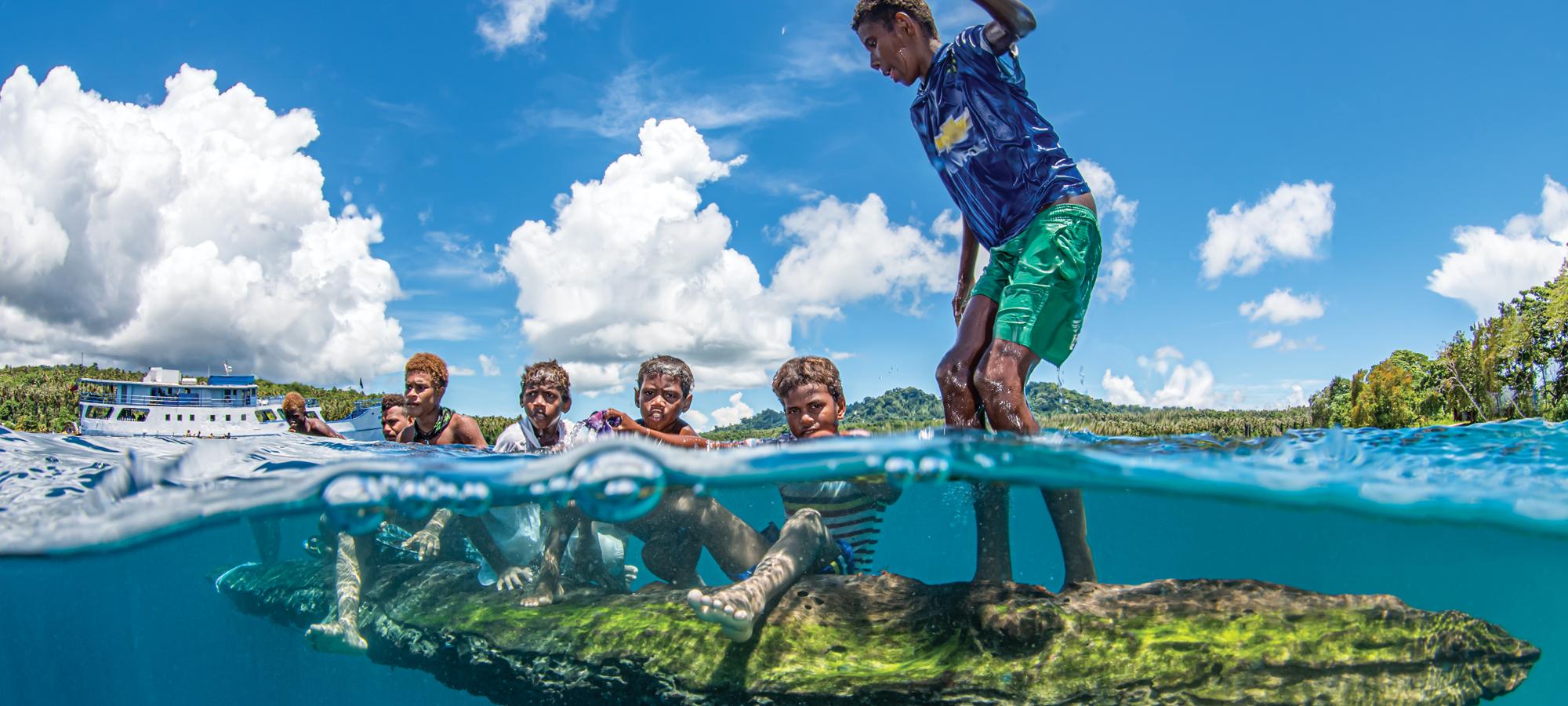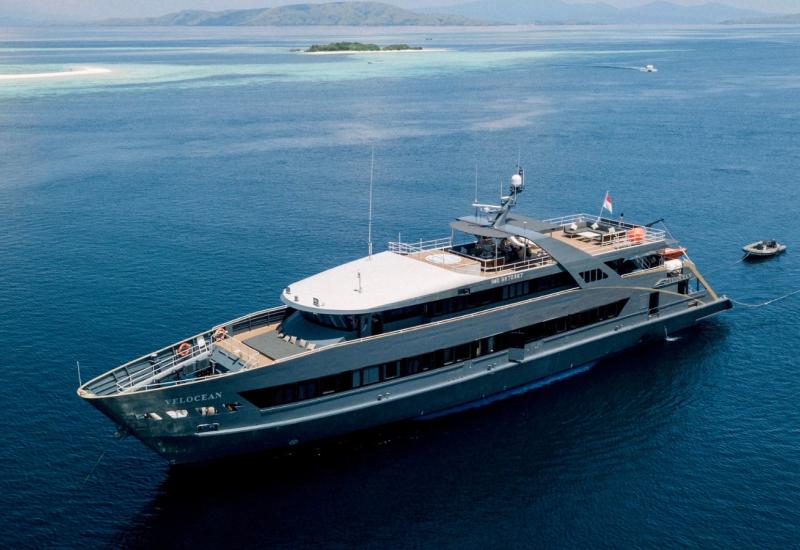How Remote Cultures Define Connection and Why You Should Care
Rare in this world are the moments when time seems to stop. When the present isn’t defined by Instagram posts or bank account statements— but by nature. Connection. A hard day’s work. This is the stuff of many remote cultures that still live in traditional ways and at a slower pace. What is valued is often different than what the West says should be important. It’s out there that you might just stumble upon a new way of looking at life.
SOLOMON ISLANDS
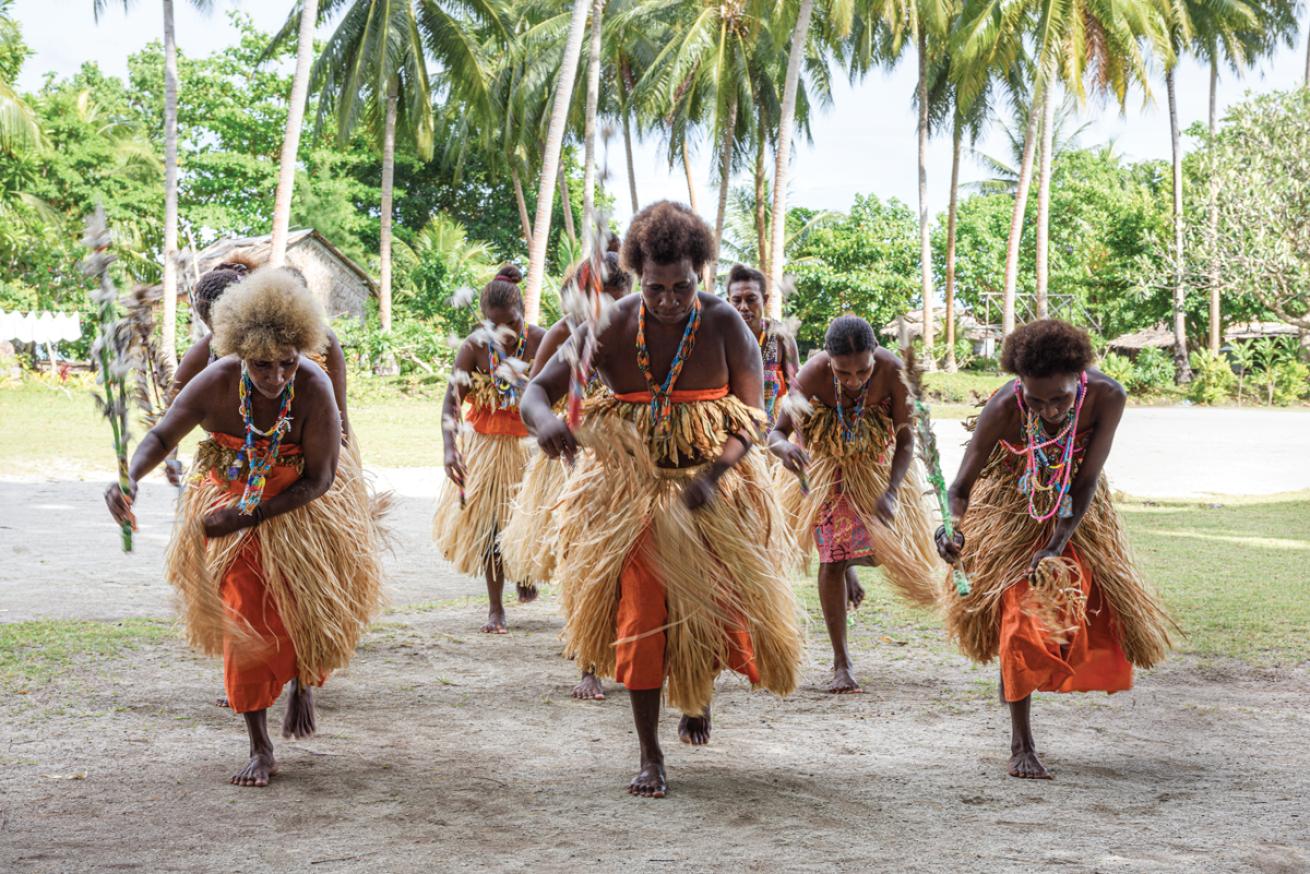
Michael ZieglerMany local village tours include a performance with singing and dancing.
“It’s not really a money economy, generally,” says Sam Leeson of the Solomon Islands, a largely undeveloped nation east of Papua New Guinea that is the cruising grounds of M/V Bilikiki, the liveaboard he co-owns.
Pause. Think about that. This remote island nation is composed of villages where people are subsisting off the land, carving dugout canoes and living in thatched-roof dwellings. Yes, money changes hands when it comes time for doctor visits and school fees, but money is not what drives the day-to-day. This is still a bartering, communal economy that focuses on the collective well-being.
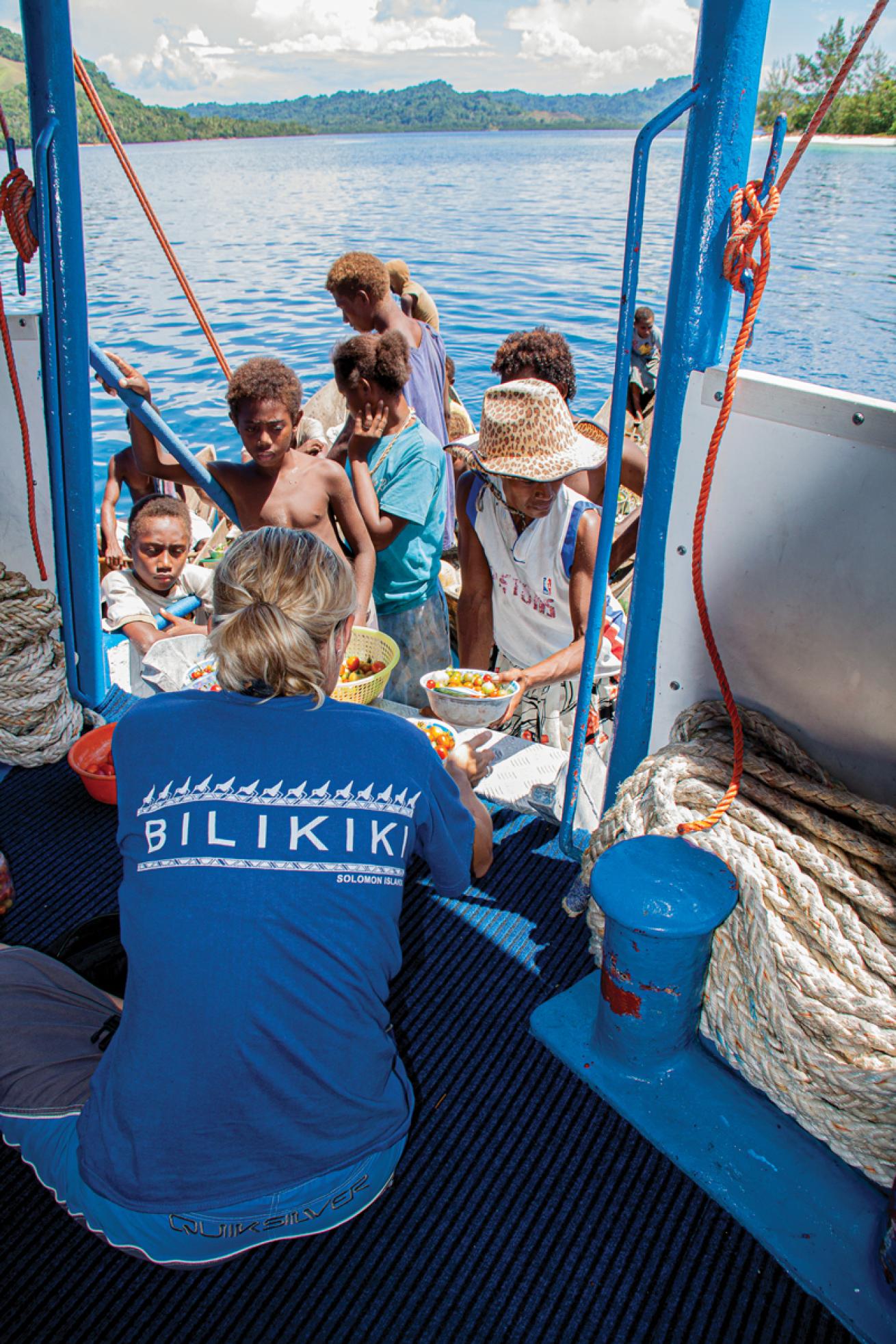
Andy SallmonChildren are often first to greet divers visiting the Solomons by liveaboard.
During every itinerary, Bilikiki visits at least a couple such villages—although technically the visit starts with the village coming to the boat. Or, at least, the smallest representatives of the villages running to greet the vessel. “The kids come out first to see what’s going on,” says Leeson. It’s common for them to be playful, wanting to interact with travelers and seek out entertainment, as all kids do. Then, a few locals come out by canoe to sell fruits and vegetables to the boat. When visiting during planting season, Leeson and his crew give out seeds to the locals, then they buy back what is grown as a way to help support these communities, which are kind enough to offer guests a look into their lives.
From here, guests who would like to are invited to come see the village. The liveaboard offers a gratuity to one of the elders of the village out of respect, and for the time that people take out of their day to show visitors around. Plus, there is a performance with singing and dancing. The school is part of the tour. “We encourage people to bring school supplies if they want to,” says Leeson. “People get a lot out of giving back in that environment.”
BEST PRACTICES Guests of Bilikiki can meet artists who carve intricate wood designs with inlaid shells, some of which fetch thousands of U.S. dollars. Buying them can really help the local economy. If you think you may want to make a purchase, it’s best to have cash on hand; there is no infrastructure to make credit card purchases even in the capital, much less remote villages. bilikiki.com
MALDIVES
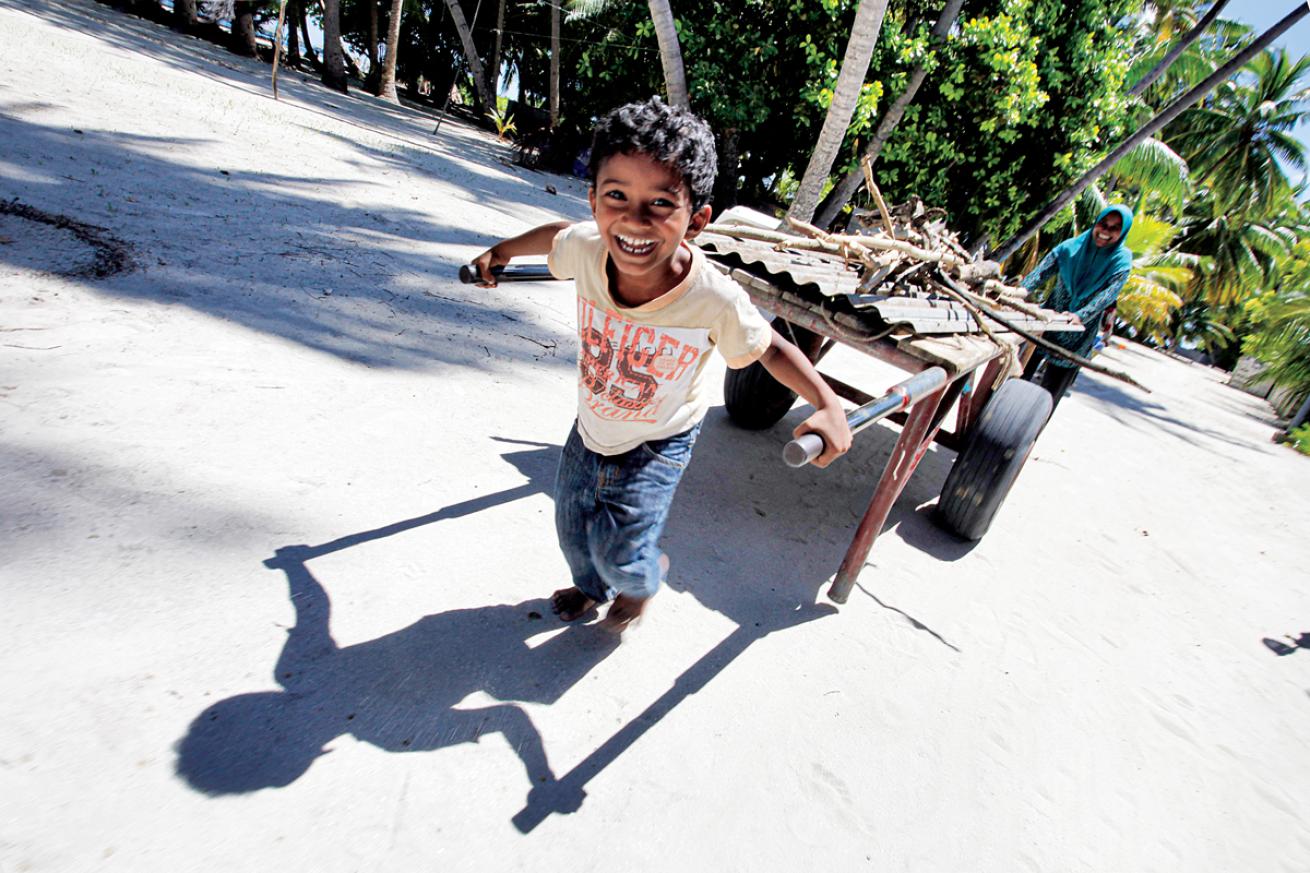
Tobias FriedrichKids tend to be welcoming of guests.
The Maldives is more developed than many other island nations—for example, most homes are built from cement block, not thatch—but its villages still present an opportunity to see a way of life that is very different from Western cultures. Perhaps the first thing a visitor would notice is that almost all of these islands are incredibly sparse when it comes to population. The country has roughly 400,000 people across 116 square miles of islands. About half of Maldivians live in the densely populated capital of Malé, leaving the rest of the population spread out among the 1,190 tiny islands that make up this archipelago nation.
The second big thing to consider is that this nation depends entirely on the ocean. “Besides the fish, they import almost everything,” says Urik Comparini, cruise director for Maldives Aggressor II. “These are really just coral atolls with a few trees. The only thing they have around them is water.”
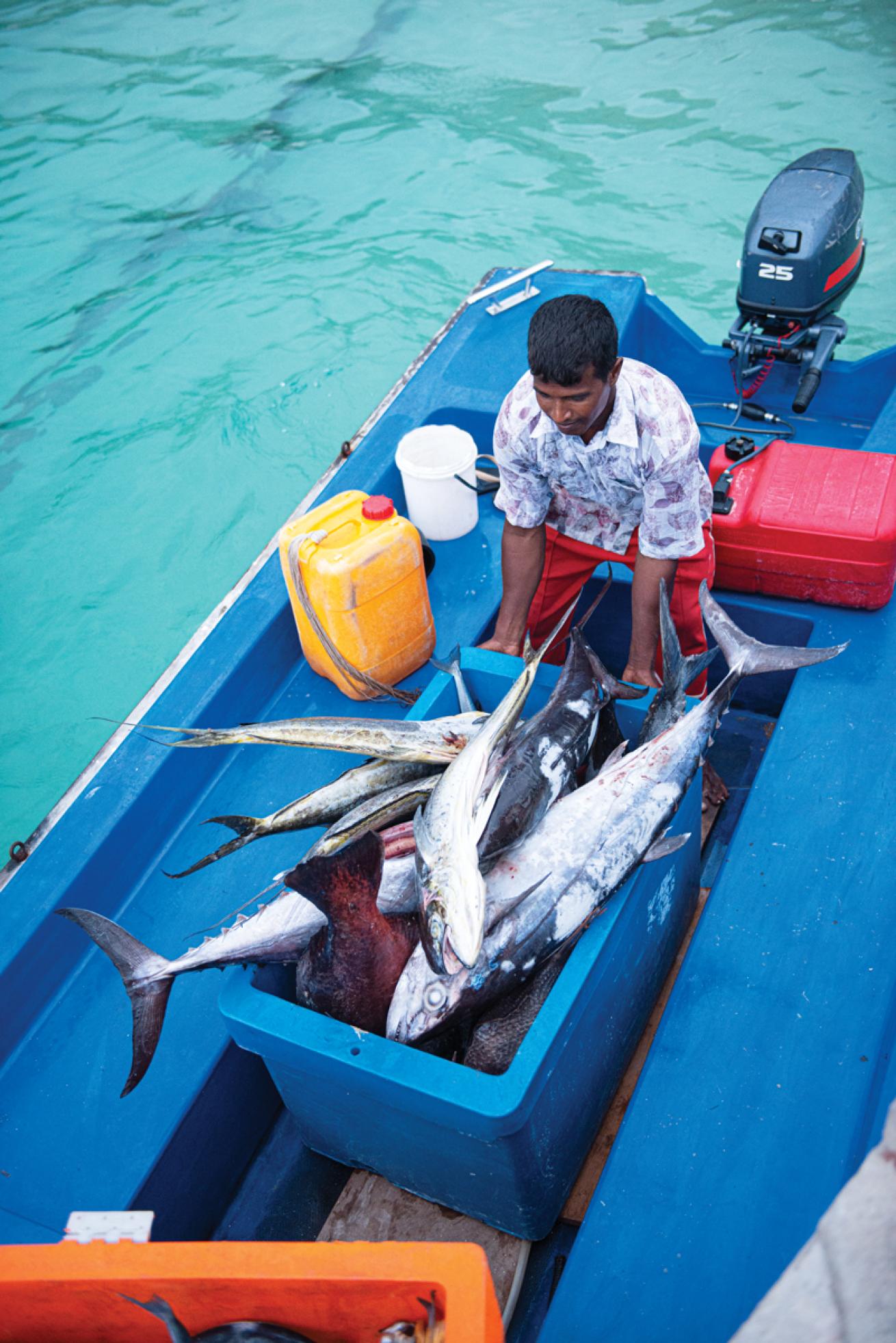
Jad Davenport/National GeographicThe economy largely revolves around the catch of the day.
As such, fishing is a big part of daily life. “Every day, most men are finding at least five to 10 minutes to fish to bring something home,” he says. Most meals center on the day’s catch, including mas huni, a dish that contains coconut and dried tuna.
To find variety, most locals travel by boat to Malé. Almost anywhere in the Maldives is only a couple of hours by boat from the capital, with its skyscrapers and supermarkets.
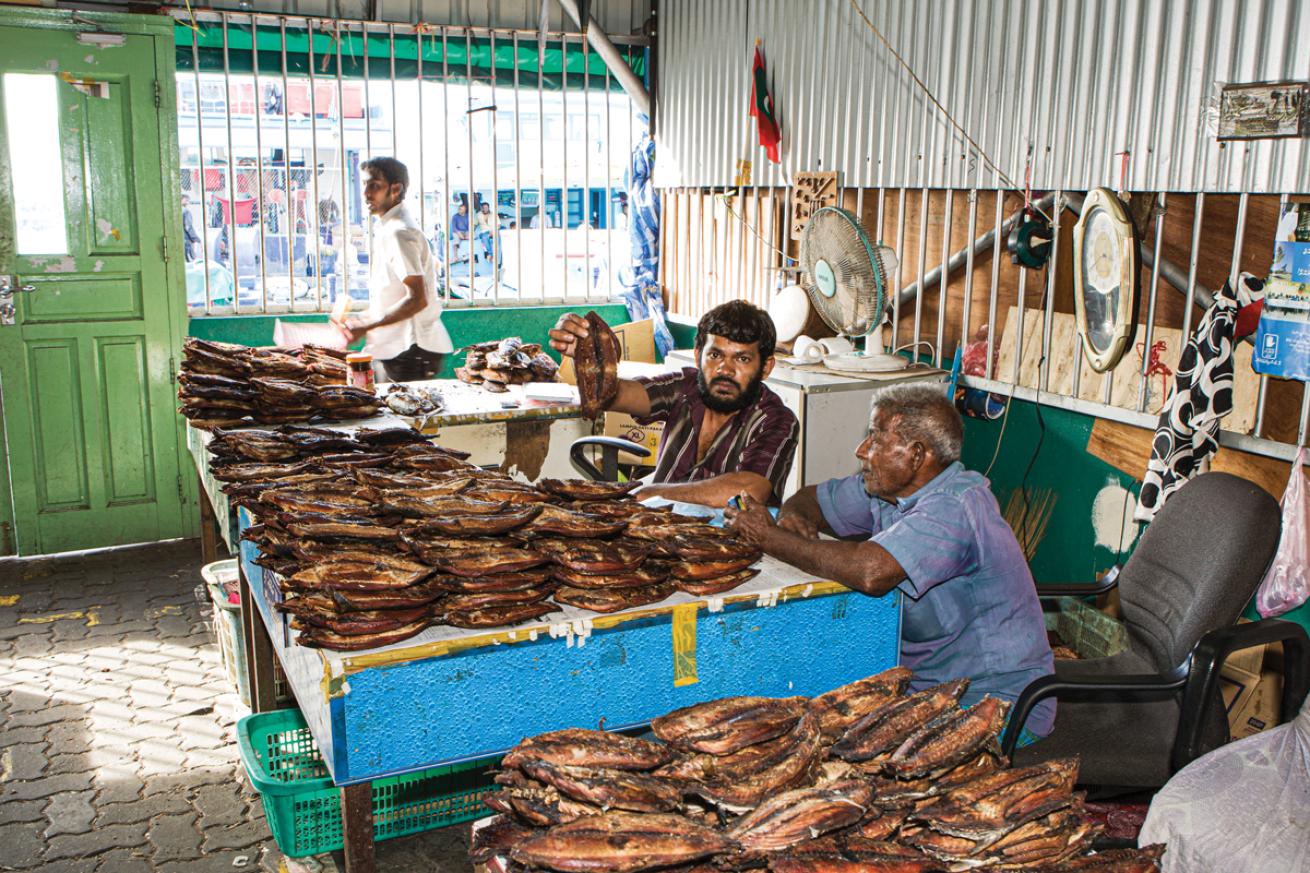
Michele WestmorlandA dried fish market in Malé.
Another difference between Malé and more remote island nations is that in the Maldives, local practices are something you can ask about—most people, especially the young, speak some English. The nation’s official language is Dhivehi, which is not spoken in other parts of the world, so many Maldivians learn English to communicate with visitors, Comparini says.
BEST PRACTICES It’s suggested to keep shoulders covered, and wear long skirts or shorts. The country is primarily Muslim, so it’s respectful not to drink alcohol in public, as it is forbidden for locals—although on the liveaboard is fine. aggressor.com
INDONESIA
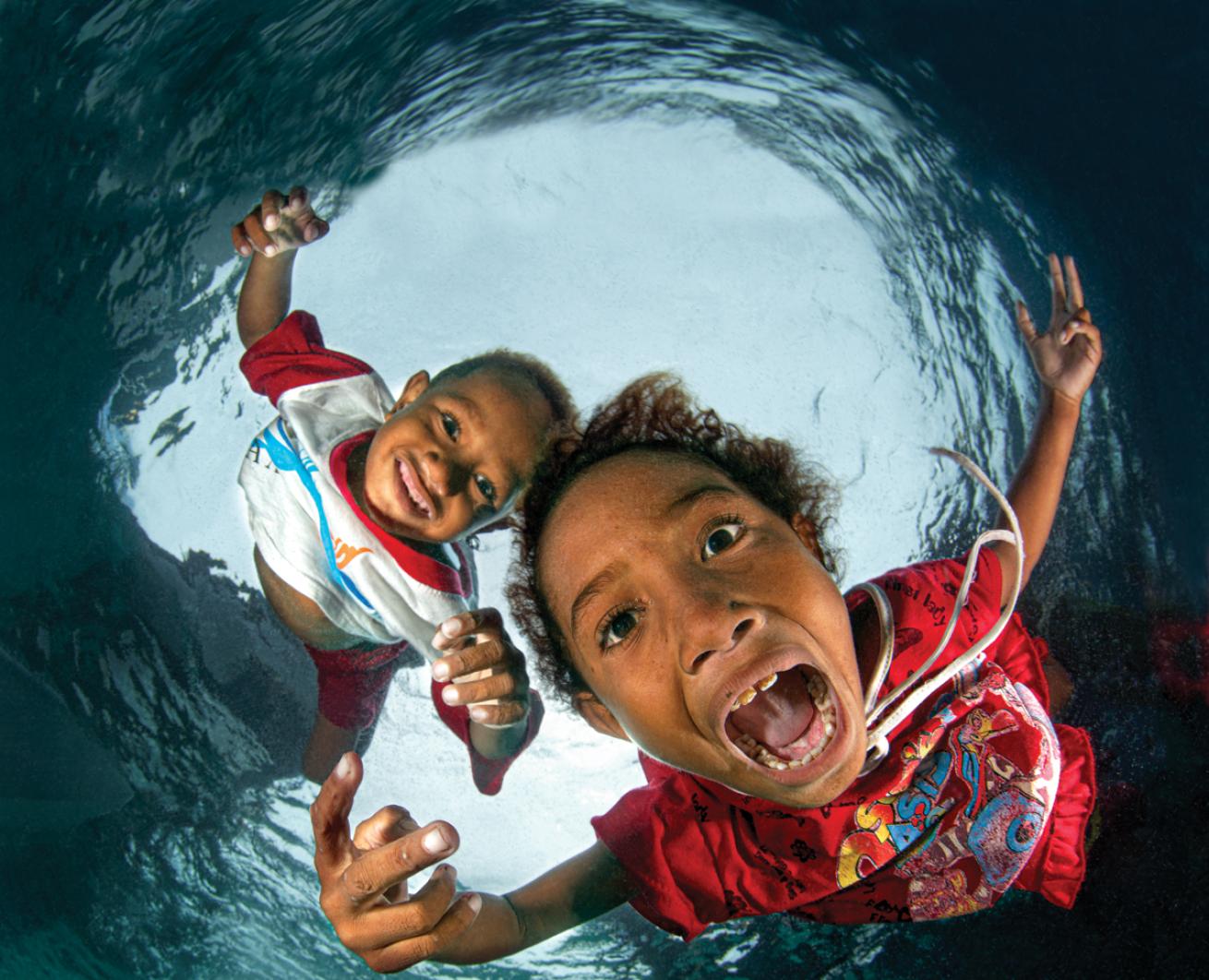
Tobias FriedrichKids pose for underwater photos.
Indonesia is unique in that local statute dictates that the people own the reefs off the coast of their villages. As such, it’s the custom to ask permission to dive them, which sets up a more intimate relationship between liveaboard crew, guests and locals.
Before a day of diving, it’s mandatory to take a local guide on board the boat, then report to the village. “Certain villages have a more open attitude,” says Jamie Maher, co-owner and operator of Calico Jack, a liveaboard that specializes in visiting the more remote regions of this island nation.
“If you show respect, you will be granted respect. Boats that fail at that get chased away. This is definitely one of the last ‘edges’ of the world.” Calico Jack ventures throughout the coast of West Papua, where villages are remote and only accessible by boat. They’re also remote in that the reach of the government doesn’t fully extend there.
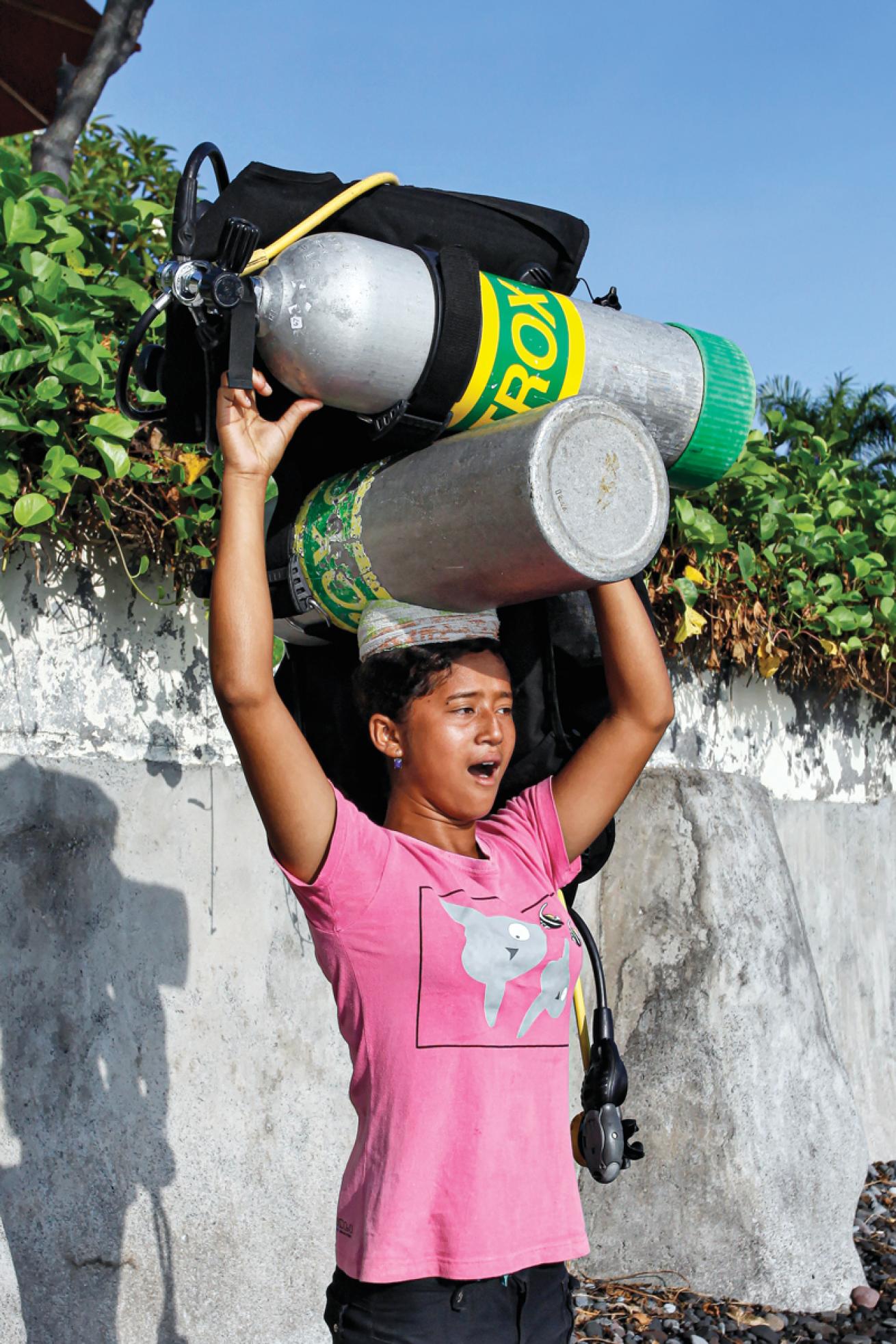
Tobias FriedrichBefore a day of diving, it’s mandatory to take a local guide on board the boat, then report to the village.
“As the boat representative, I will go first with the park ranger to feel out the vibe. Every visit can be different, depending on who is in charge that day.” Just as with any relationship, building trust takes time. Maher and his team are keen to be welcomed, not just so that guests can learn about this way of living but so that they can give back in a more meaningful way.
“We are focused on the needs of the locals and what we can bring them that will be most useful,” he says. In the bigger picture, their goal is to help with solar panels to power light sources, and possibly generators down the line in order to give back to a region that has already given its visitors so much.
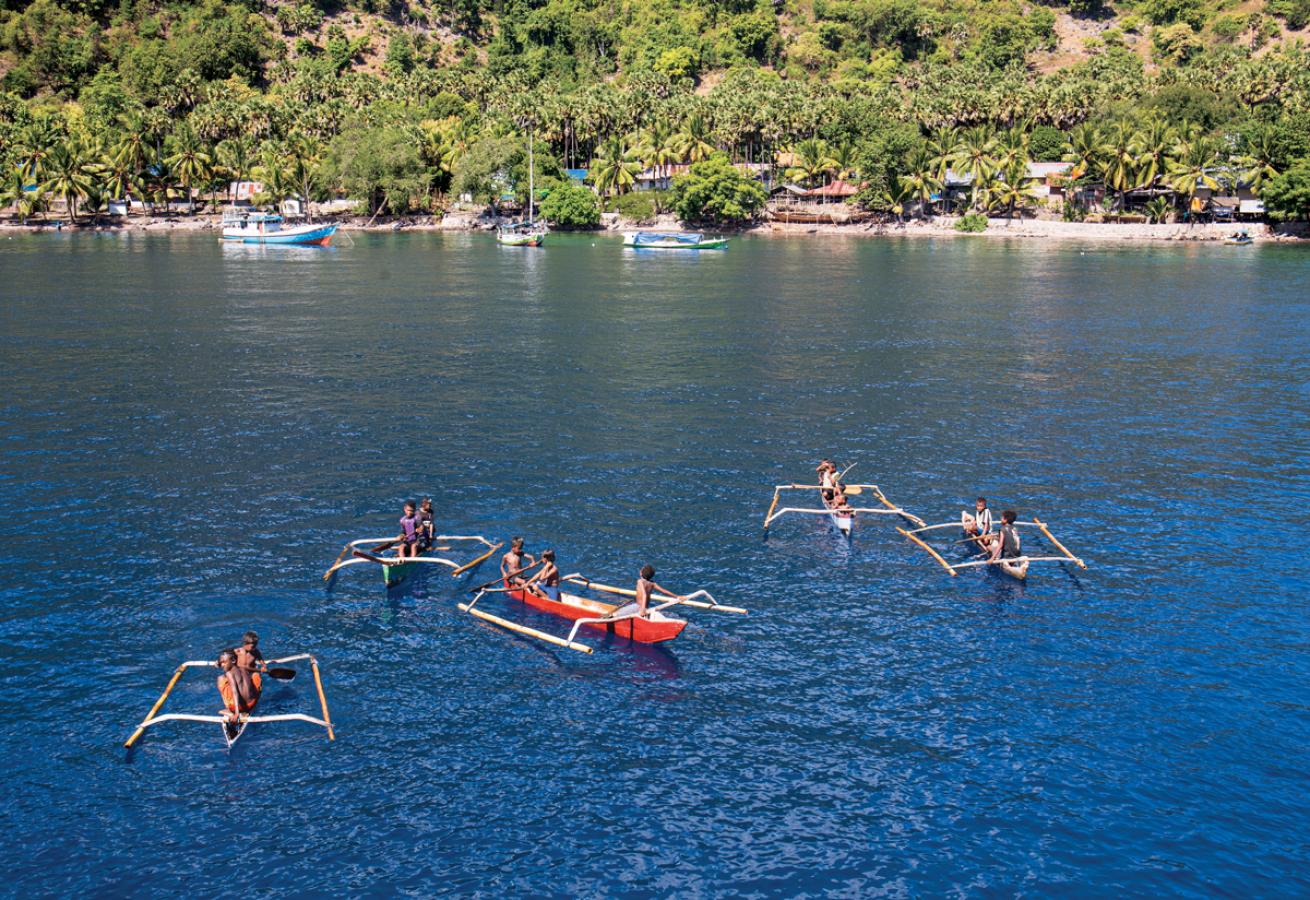
Michel LabrecqueThe sprawling islands of Indonesia are renowned for their diving, but just as rewarding is interacting with the local people and wildlife ashore.
BEST PRACTICES The boat carries lots of items, such as secondhand clothes and shoes, to share with the villages. If guests want to bring those as well, that gesture is often appreciated. Educational materials are also great to bring. calicojackcharters.com
FIJI
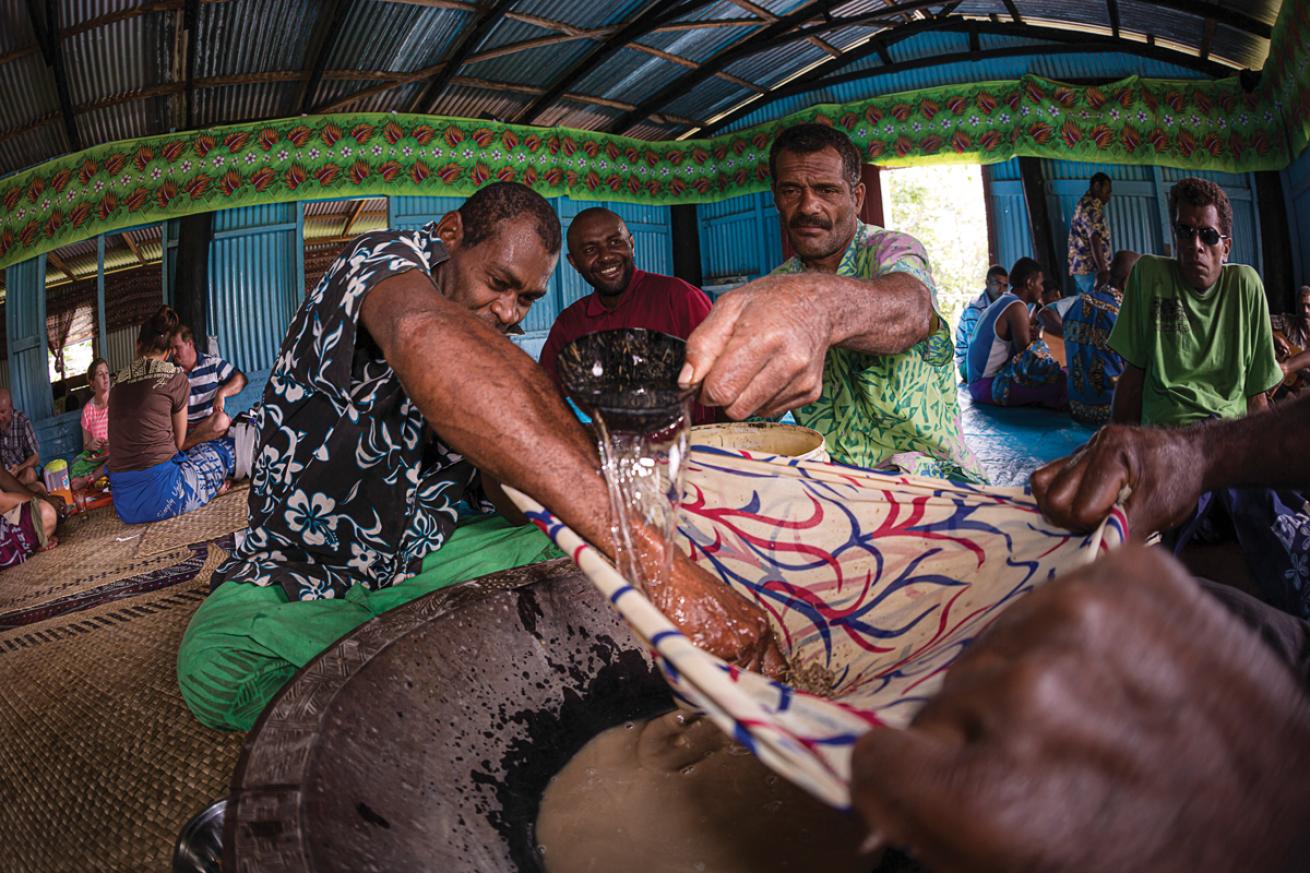
Shutterstock.com/Vitalina RybakovaMen prepare kava to be imbibed during a ceremony in a small Fijian village.
The moment the Nai’a liveaboard is spotted, the triton trumpet shell is sounded. The kids arrive first, all smiles, then the rest of the villagers of the Fijian island of Gau come to the beach to greet the guests. The kids often wear grass skirts, and they’re always dressed in bula shirts, made of Fijian fabric with traditional designs. Shortly thereafter, the village tour begins. “Sometimes you get a chatty Fijian that is telling you everything, and sometimes you have to pull out the questions,” says Jemma Aitken, one of the cruise directors for Nai’a.
No souvenirs are sold in the village. “The small villages—that is the real Fiji,” says Scott Peaker, also a cruise director for Nai’a. “You don’t get to see that unless you go out, away from the towns.”
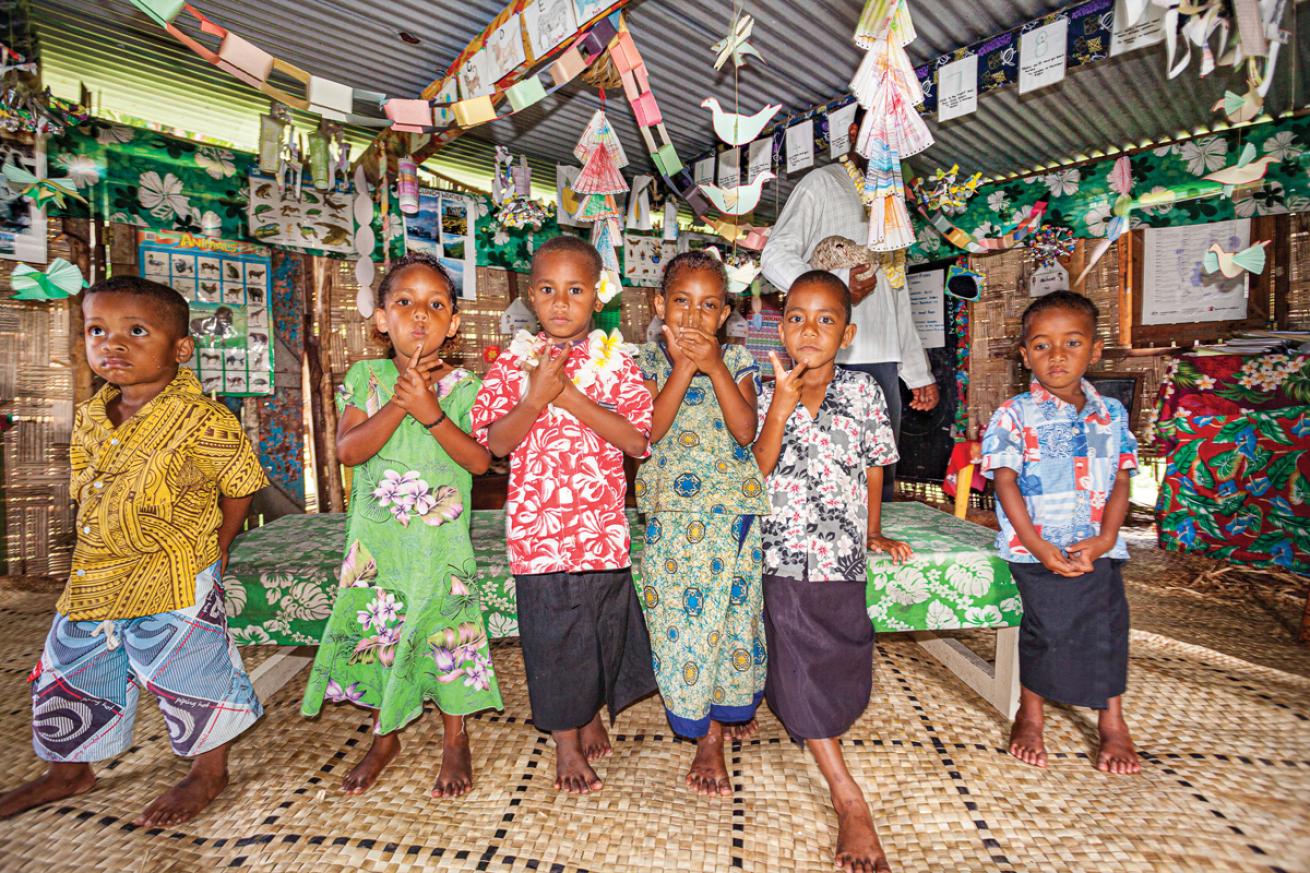
David FleethamChildren join ceremonial festivities through song and dance.
At the core of every village in Fiji is the kava ceremony, which happens with every visit from a boat. The ceremony starts with the Nai’a crew offering a gift of kava root, which is pounded and mixed with water to make a drink that relaxes the body. Then, the hosts turn around and offer a gift of kava right back. A prayer in Fijian comes next, followed by introductions.
“They call it a program. The kids get up and do a meke dance that’s super cute,” says Aitken. Then the women all do a dance, followed by the men. “They try and get us to jump in and join in—it’s not too serious,” says Aitken. “They want us to have a little joke with them.” It’s all lighthearted, and it’s a window into the hearts of the people. This ceremony offers the sort of welcome and energy that’s hard to forget.
At the end, the villagers sing a traditional farewell song called Isa Lei Lea. “It is a song saying that it is not goodbye, but a farewell. That hits home for a lot of people. We often see guests with tears streaming down their faces,” Aitken says.
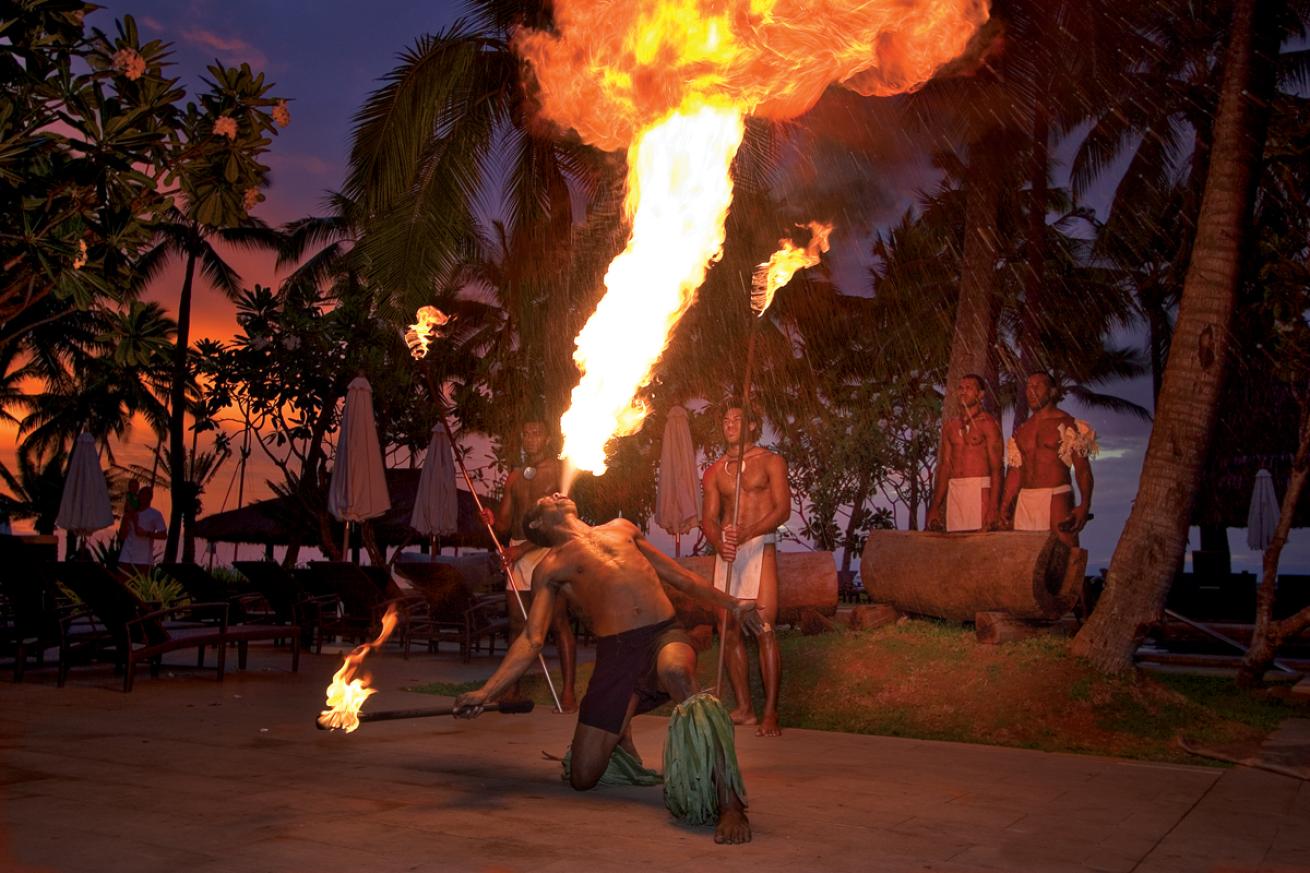
David FleethamA fire dancer at sunset.
BEST PRACTICES: Don’t touch the tops of the children’s heads, as doing so is considered disrespectful. It’s best to remove hat and sunglasses during the village visit—just as you would if entering someone’s home. For those who do have extra space in their luggage, school supplies are always appreciated. naia.com.fj
BE IN THE KNOW: Is it OK to photograph the locals?
Etiquette with photos is the same as it would be back home—ask before taking. Groups of guests are better received when they stay together with their host, as opposed to having satellite camera-toters off snapping photos or nosing around on their own.
Generally, in a village tour, the shared spaces such as paths and communal cook areas are fair game. Often, a guide of sorts chaperones the visit. If there isn’t one, use your best judgment, as if it were your home and community.
Kids tend to be universally welcoming of guests; in these remote areas, many haven’t seen themselves in photos.
Digital cameras and videos work especially well for breaking the ice and sharing a giggle.

